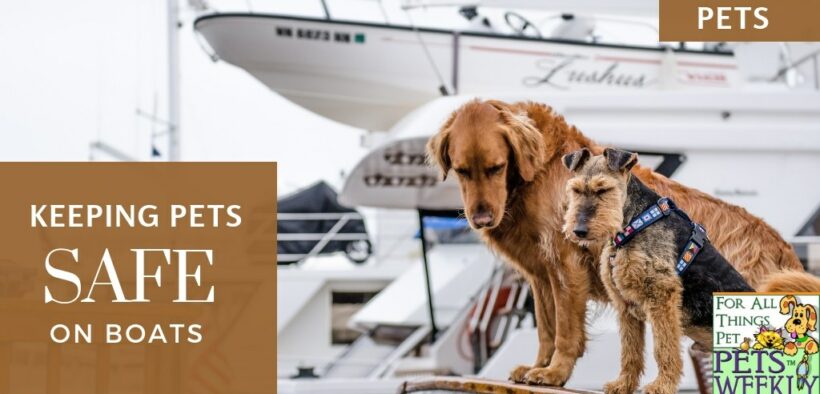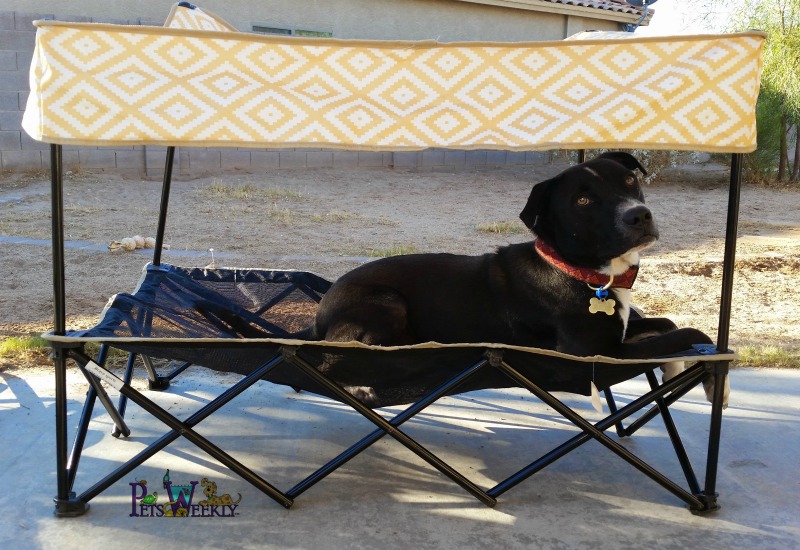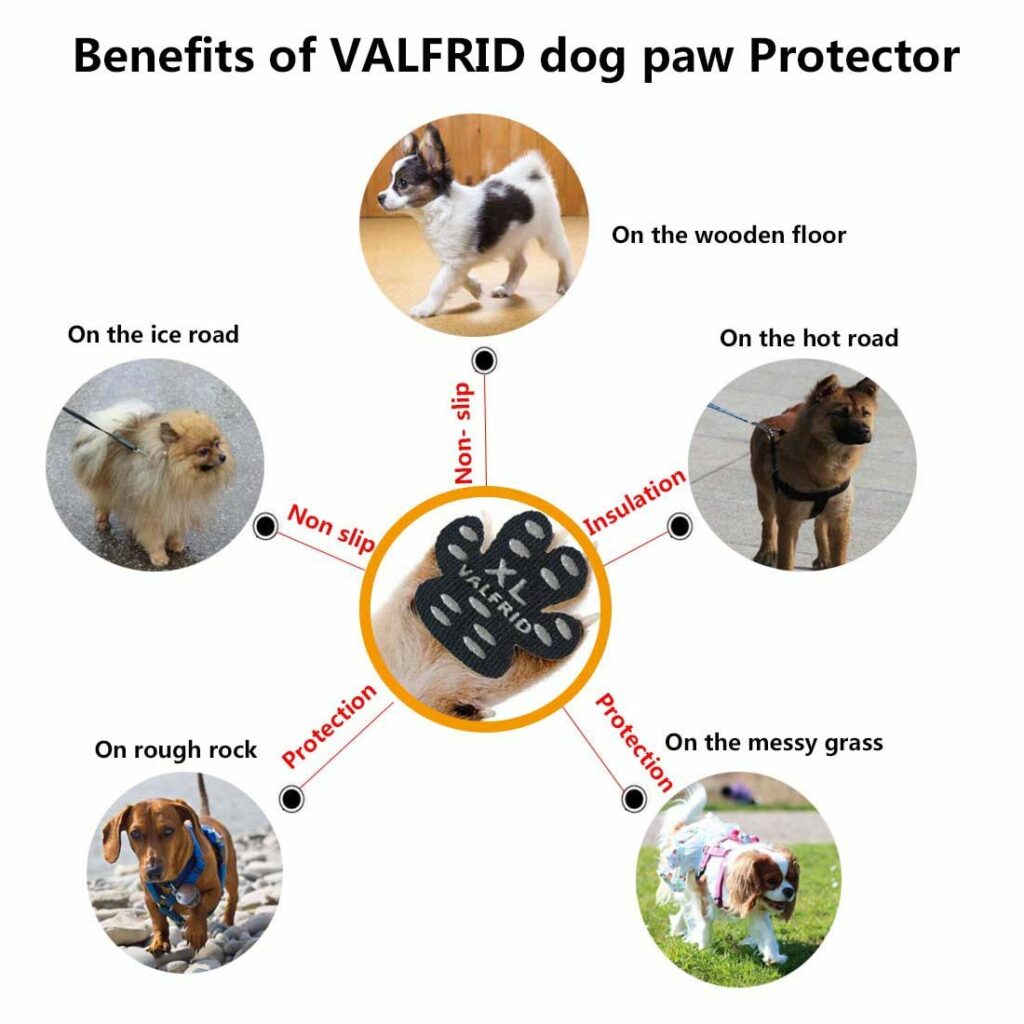Keeping Pets Safe On Boats
Share

Life at sea with a dog or cat is fun dream. But before you cast off, it’s important to know if you have a sea-faring animal or one who prefers land.
Whether you’re enjoying a boat, lake, ocean or pool – you can’t automatically assume your dogs and cats will take to life on the sea. Pets prefer firm, stable surfaces – and water does not a firm surface make… So before you plan your next water outing, be sure that you and your pets are prepared for life at sea.
Here are a few tips to prepare your pet for a day (or a few months) on the boat:
Take a Few Test Runs.
Don’t assume your pet will automatically take to boating. Most dogs and cats like firm, stable surfaces, and a boat can be anything but stable. Before you plan an outing with your pet, take your pet for a short test run and see how they do.
Test the Engine
Depending on your boat (or yacht), the engine can be a frightening thing for pets. Take time to turn your engine on and off to see how your pets do with the noise. You may need to take time to get them used to the sound. Some pets couldn’t care less, but others make themselves sick with worry at the loud noises.
Take short trips at first to let your pet get acclimated to the pitch and roll of a boat. Remember, if you can get seasick, so can your pets…
Water Safety
Be sure your pet is wearing a Personal Lifesaver Device (PFD) if they have never been on the water (and in most cases, even if they are very familiar with water). This is particularly important when dealing with ocean sports such as surfing or paddle boarding.
Your dog (or cat) can easily slip away from you during the many distractions of boating. Should they fall into the lake (or worse, the ocean), they may not make it back to a land. This is especially true in the ocean, as pets (and people) often have difficulty negotiating distance.
Depending on your boat size, you may need a way to fish your dog or cat out of the drink should they fall in. Make sure everyone in the family knows exactly what to do in an emergency.

Make Sure Your Pets can Swim
Contrary to popular belief, not all animals naturally know how to swim, and some breeds can’t do it at all.
Not all dogs and cats naturally take to the water. Take a look at our list of dogs that can’t swim (and some that just aren’t very good at it).
We recently found another way to keep your pets safe on boats and in the water that we love – most impressively, it keeps your dog’s head out of the water in case they pass out! Check out the new WaterCollar – A PFD for Dogs.
Store Fishing Tackle Away from Pets
Nosy pets in fishing tackle can spell disaster! Make sure there are no hazardous or dangerous materials within your pet’s reach. Keep hooks safely stored and out of the way.
Fishing line can cause a host of problems if your pet eats it. Such an experience always results in an expensive trip to the veterinarian. Make sure your fishing tackle is stored safely.
Sun Protection
When you’re on water, the reflection from the sun can cause a lot more damage than normal. UV rays create many dangers – including skin cancer and blindness.
Products that Protect Pets from Sun:
- Shade: While it may seem obvious, it’s often not to pet owners. Make sure your pets have an escape from the hot rays of the sun.
- Visor: Your dogs and cats may need some extra protection in the form of a visor they can comfortably wear.
- Pro Tip: buy one that works specifically for them. Playa Pup has a line of protective sun clothing with a UPF of 50+
- Eye protection: Pick up some Doggles for pets that love being on the water. Just like snow can cause snow-blindness, the sun’s reflection off water can damage your pet’s eyes.
- Sunscreen: You know that little soft spot on your pet’s nose? It’s one of the areas where they are most susceptible to the sun. Apply some sunblock to the area (and any other areas not covered by skin). Remember, only use sunblock that is specifically designed for pets. Human sunscreen can make your pets very ill.
Help your pet grow accustomed to wearing these items. It may take some time, so start early.
Beware Dehydration and Heatstroke
Be very mindful of your pet on hot, sunny days – particularly on boats. To much time in the sun and heat can cause problems such as sunstroke, heat cramps, and heat exhaustion.
Become familiar with the symptoms of sun poisoning. Make certain your pets are drinking enough water and not showing signs of overheating.
Provide plenty of water for your pets and check them for dehydration throughout the day.
Dogs and cats regulate their body heat by panting. Excessive panting and drooling, and abnormally rapid pulse, are just a few of the danger signs that you pet is overheating.
Learn the symptoms of heatstroke in pets. Check out these easy to print Heat Related Pet Resources that explain how to provide CPR to your pet and how to identify dehydration in pets.
Provide Plenty of Shade
Create a shaded area on your boat where your pet can take shelter while you’re on the beach or boat.
If you haven’t seen the new QuikShade Beds for Pets, do you and your dog a favor and check them out. They provide the perfect shade solution anywhere, anytime.

There should be plenty of air movement to aid in cooling them down. Wetting their coats with fresh water can help them feel better.
Protect their Paws
Dogs and cats absorb cold and heat through their pads. Their sensitive pads are easily burned by hot sand, hot sidewalks, a boat’s hot fiberglass or vinyl surfaces.
Purchase a set of socks (we love the power traction socks from Woodrow Wear) or have a set of doggy boots on board.
Paw Pad protectors are another option for dogs who have a problem getting traction on the slippery fiberglass of a yacht.

Boating With Pet Regulations
Remember to check pet regulations in advance if you plan to venture to foreign ports with your pet. Many destinations have a variety of health laws that apply to “foreign” animals, which may include extensive quarantines.
If you live near an international border, this is particularly important as your pets may not be allowed into other countries.
Each state has their own set of rules in place for boating with pets, and you will also be held to the rules that govern a particular county. In addition, you’ll need to check out the National Forest regulations for any special requirements.
For detailed information about water border crossing and very detailed information on boating with pets, check out this informative article: Pets Ahoy! Boating with Pets









